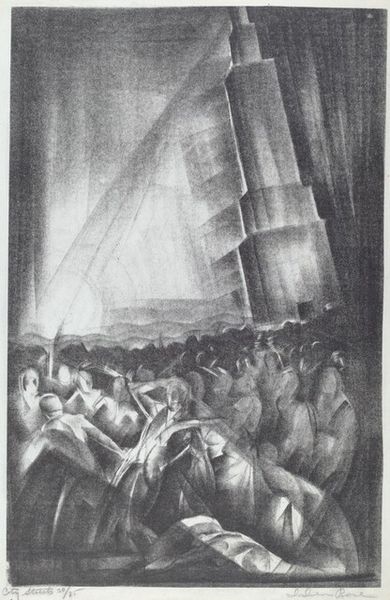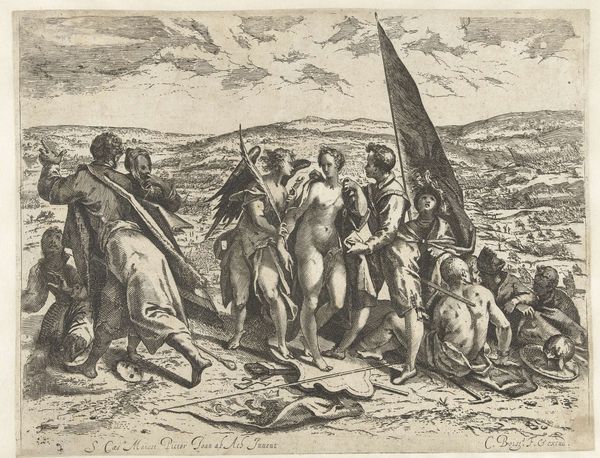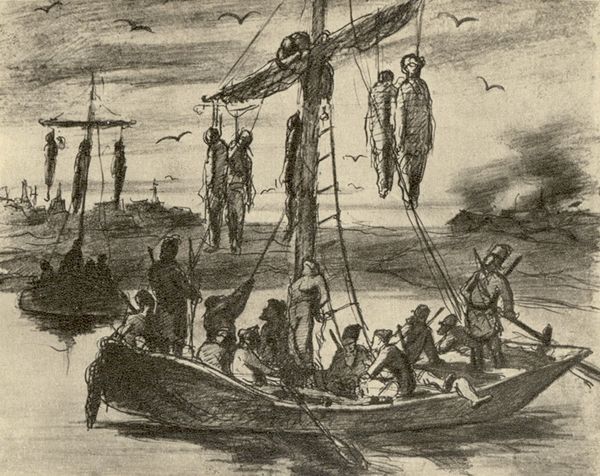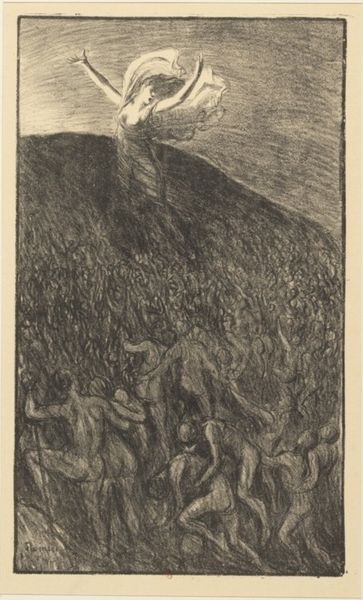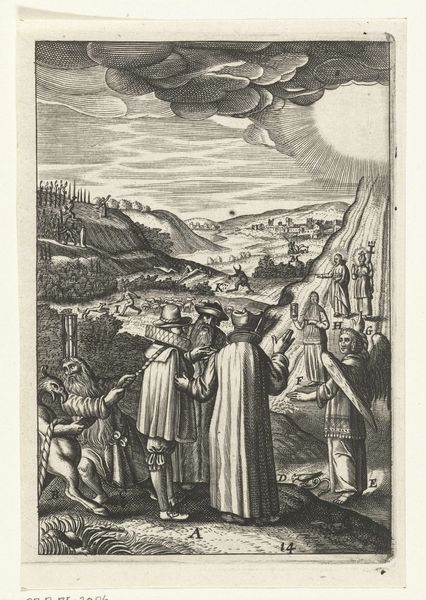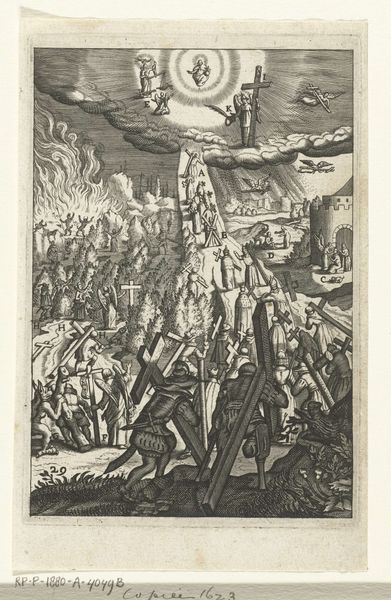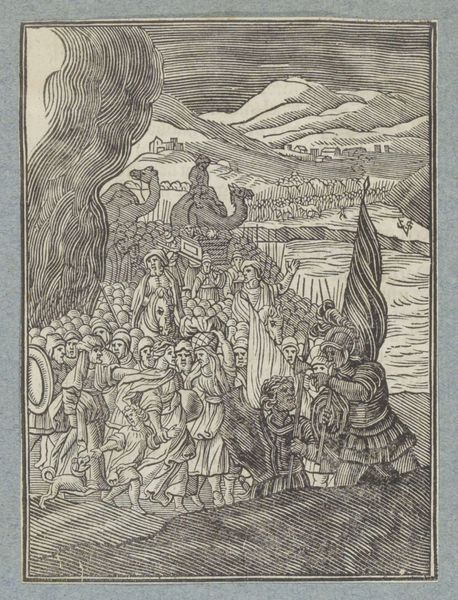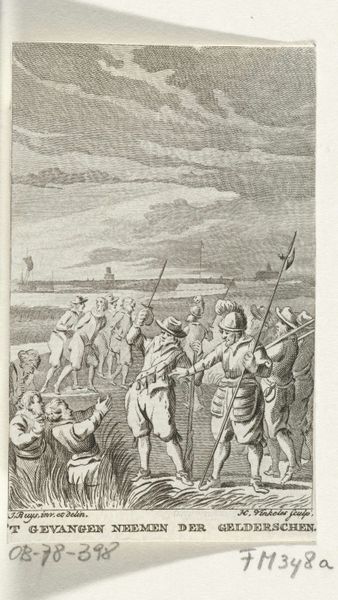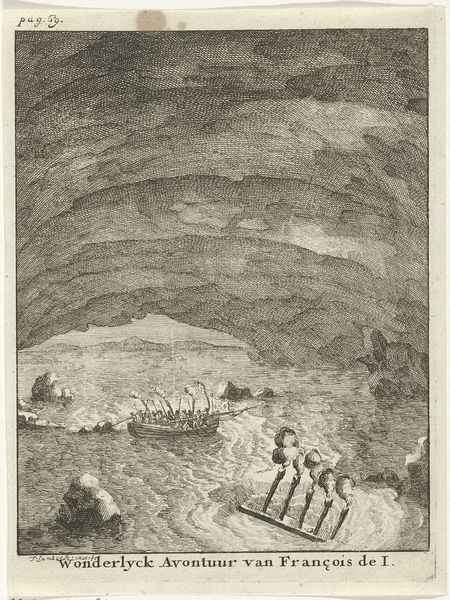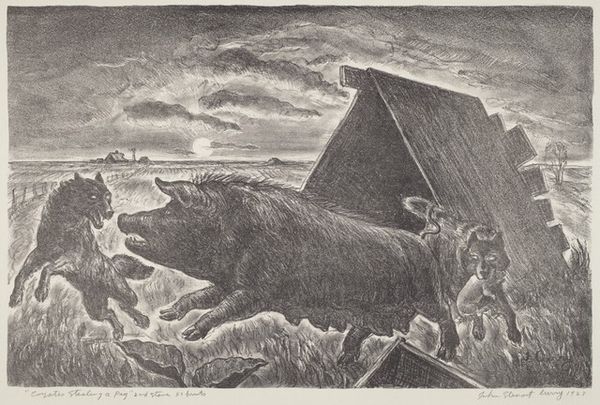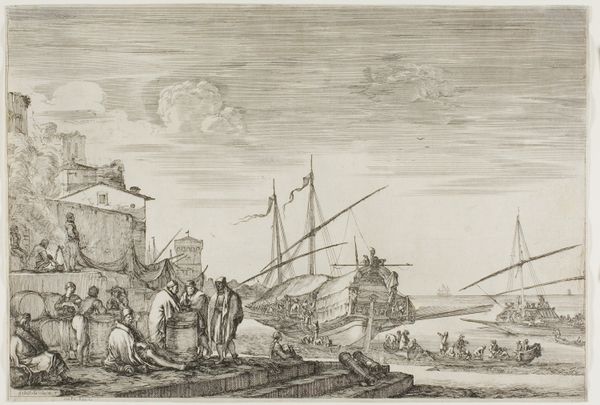
drawing, print, pencil, graphite
#
drawing
#
narrative-art
# print
#
pencil sketch
#
landscape
#
pencil drawing
#
pencil
#
graphite
Dimensions: Image: 320 x 240 mm Sheet: 407 x 330 mm
Copyright: National Gallery of Art: CC0 1.0
Curator: This is "Roustabouts," a pencil drawing created around 1939 by Miriam McKinnie. Editor: Immediately striking, the muted palette creates a somber atmosphere. The downward perspective lends the image an air of laborious effort and even struggle. Curator: Absolutely. Note how the composition is arranged. The artist skillfully uses the verticality of the central flagpole and the tent poles as framing elements that bring attention to the figures in the foreground. Also, see how McKinnie uses a limited range of shading to bring depth and volume to each form, particularly evident in the way the bodies strain. Editor: McKinnie's depiction of these workers against the backdrop of the Great Depression lends itself to a deeper understanding of the social realities of the time. Their collective action to raise a flag –perhaps signaling their company's arrival– hints at broader themes of solidarity and survival, even a kind of enforced patriotism through labor. What does this physical demand ask us to think about the individual, their rights? Curator: The repetitive nature of their poses establishes a strong rhythm, don't you think? And the flag snapping in the wind reinforces that dynamic. Though executed with simplicity, the perspective foreshortening gives a powerful sense of depth, creating a visual pathway drawing our eyes up towards that distant town on the horizon. Editor: Precisely. These are not merely faceless figures, they're emblems of labor exploitation within capitalist economies that flourished on their efforts. Looking again at that distant town we're invited to examine power relations—whose lives are sustained at the cost of their efforts? Curator: It's a rather tightly controlled composition despite depicting an outdoor scene. I think this artwork exemplifies how a subtle palette and thoughtful arrangement of form create both visual harmony and an understated power. Editor: And, considering McKinnie’s place within the Chicago Black Renaissance, it acts as both a reflection and critique of a generation navigating race, labor and class struggles amid the Depression. It invites us to confront the complicated social landscape through their struggles.
Comments
No comments
Be the first to comment and join the conversation on the ultimate creative platform.
